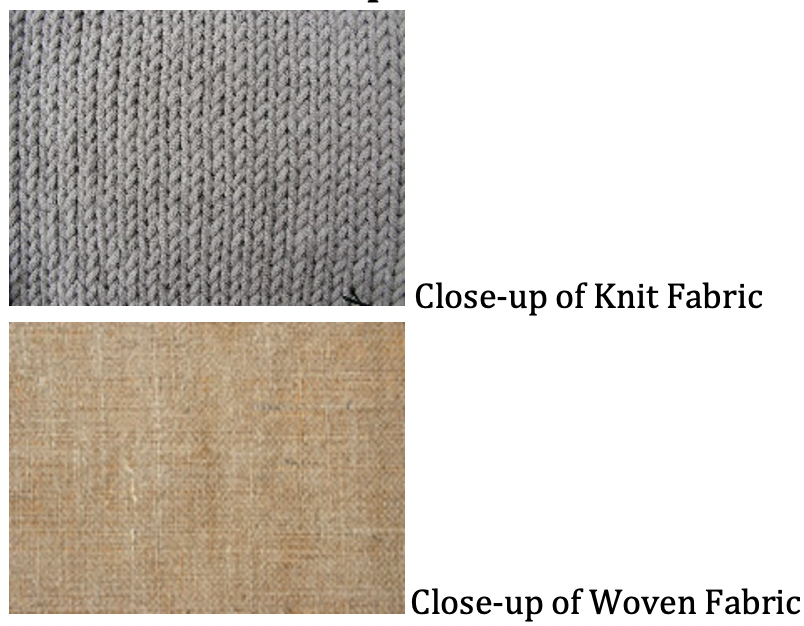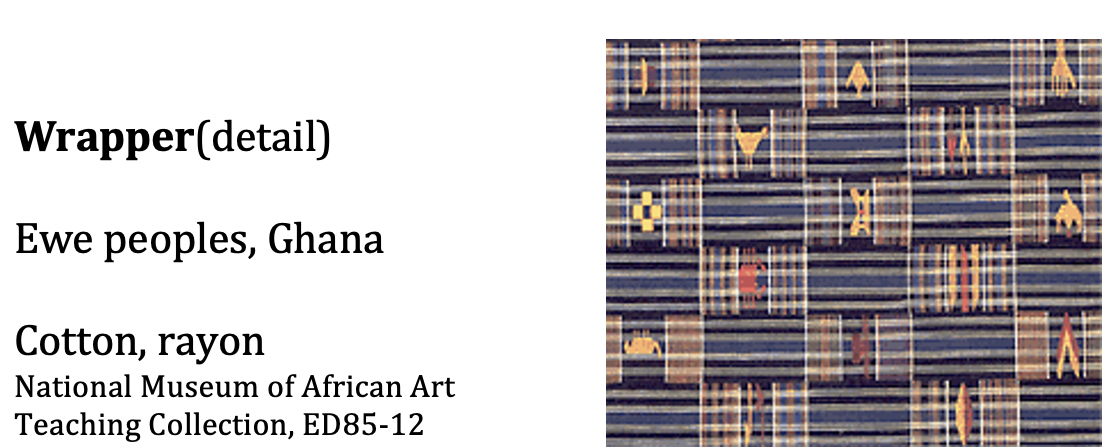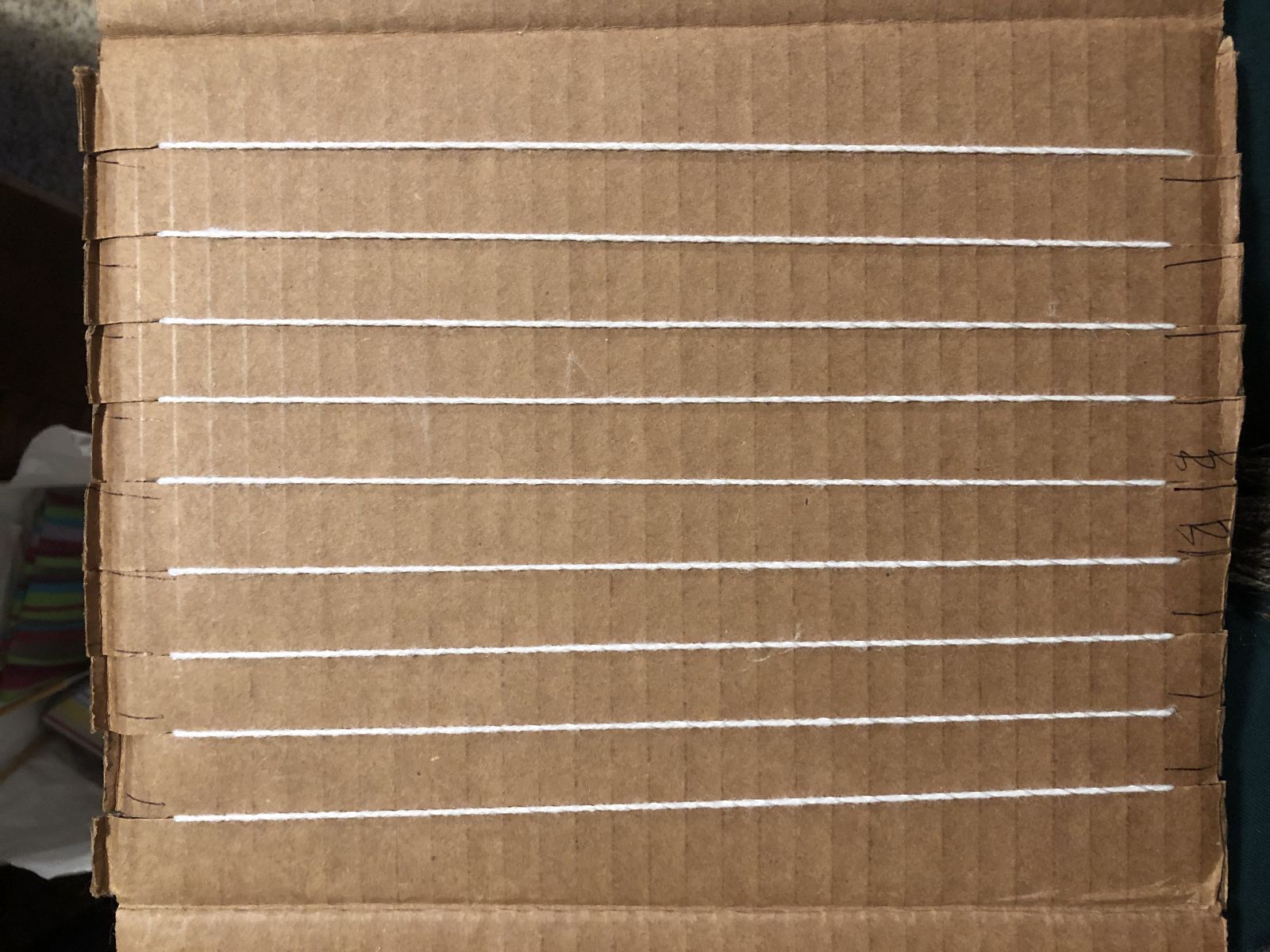Students will observe two traditional weaving techniques then use the over/under weaving technique to create their own Kente Cloth-inspired weaving. Recommended for 3rd Graders.
Color: Light reflected off objects. Complementary colors are directly opposite each other in the color spectrum: red/green, blue/orange, yellow/purple. These pairs contain all 3 primary colors.
Line: A mark on a surface between two points.
Texture: the way a work feels when touched or the portrayal of the quality of a surface. Some words to describe texture are: rough, smooth, coarse, soft, gritty, prickly, or slick.
Contrast: refers to the arrangement of elements with very different qualities next to each other to create visual interest. In this lesson it’s color.
Pattern: the repetition of the elements of art in an organized way.
Craftsmanship: A way of working that includes following directions, demonstrates neatness and the proper use of tools.
Knit fabric: created by interlocking loops of threads.
Loom: structure or frame that holds the tension in the warp threads to allow the weft threads to move through.
Weave: to interlace threads in a consistent pattern that results in fabric.
Sew: to use needle and thread to attach separate pieces of fabric along edges called seams.
Textile: a type of cloth or woven fabric.
Warp: threads are the stationary threads that run lengthwise and are under some tension.
Weft: are the threads that move through the warp, going over and under it to create a fabric.
Woven fabric: created by threads which are interlaced in a over under process.

• Scissors


Weaving is one of the oldest surviving crafts in the world, starting approximately 12,000 years ago, starting with interlacing branches for shelter and containers. 20,000 - 30,000 years ago early man developed the first string by twisting together plant fibers. Producing string and thread started the development of weaving, spinning, and sewing.
Weaving is one of the primary methods of textile production and it involves interlinking a set of vertical threads with a set of horizontal threads. The set of vertical threads are known as warp and the set of horizontal threads are known as weft. Kente cloth is a hand-woven fabric, woven in strips, which originated in Ghana (West Africa). The patterns and colors differ according to gender, status, and region of Africa. Historically, Kente cloth was the attire of royalty from the Akan ethnic group. The weaving of Kente cloth is a skill passed from generation to generation.
“Kente” comes from the Akan word “kenten”, which means “basket”. It’s also known as “nwentoma”, which means “woven cloth”. The Akan people of Ghana have been weaving Kente for centuries. The tradition is thought to be inspired by the weaving patterns of a spider’s web.
Wearing African clothing is a wonderful way for many to celebrate their culture and their heritage and to commemorate the beauty of the land. Wearing African clothing means so much more to many people than simply being a fashion statement. African clothing can be a symbol of status, creativity, and allegiance to tribal roots.
Today, Kente is woven from cotton, rayon, and silk and is worn by many people, usually for special events like weddings, naming ceremonies, or funerals. The colors and patterns of the Kente cloth are chosen to fit the event. Like the tartan patterns of Scotland, the pattern and color combination have meaning and are often tied to specific families or groups of people. To wear this cloth without an understanding or tie to the culture can be insulting to its roots.
Prepare the looms for students with an odd number of warp threads.


Students will:

Lesson written by Juliette Ripley-Dunkelberger. Additional information can be found at the following websites:
WeaveDesign, ArtistSupplySource, TheWeavingLoom, HappyHooligans, NationalClothing.org, and
Wrapped in Pride.
21st Century Thinking Skills
Thinking flexibly, persisting, questioning, creating, innovating, listening with empathy, taking responsible risks, observing, making connections, visualizing, sequencing, predicting, comparing/contrasting, determining main idea, finding evidence, problem solving, cause and effect, determining point of view, decision making.
WA State Learning Standards
(VA:Cr2.1.3) a. Create personally satisfying artwork, using a variety of artistic processes and materials.
(VA:Cr2.2.3) a. Demonstrate an understanding of the safe and proficient use of materials, tools, and equipment for a variety of artistic processes.
(VA:Re7.1.3) a. Speculate about processes an artist uses to create a work of art.
(VA:Re9.1.3) a. Evaluate an artwork based on given criteria.
(VA:Cn10.1.3) a. Develop a work of art based on observations of surroundings.
Arts Integration Opportunities
Please note: These lesson plans are intended for non-profit use only. Use of these plans for commercial purposes should give attribution to the Issaquah Schools Foundation and be accompanied by a nominal donation at www.isfdn.org/donate. Thank you.
Fueling Success for Every Student, Every School